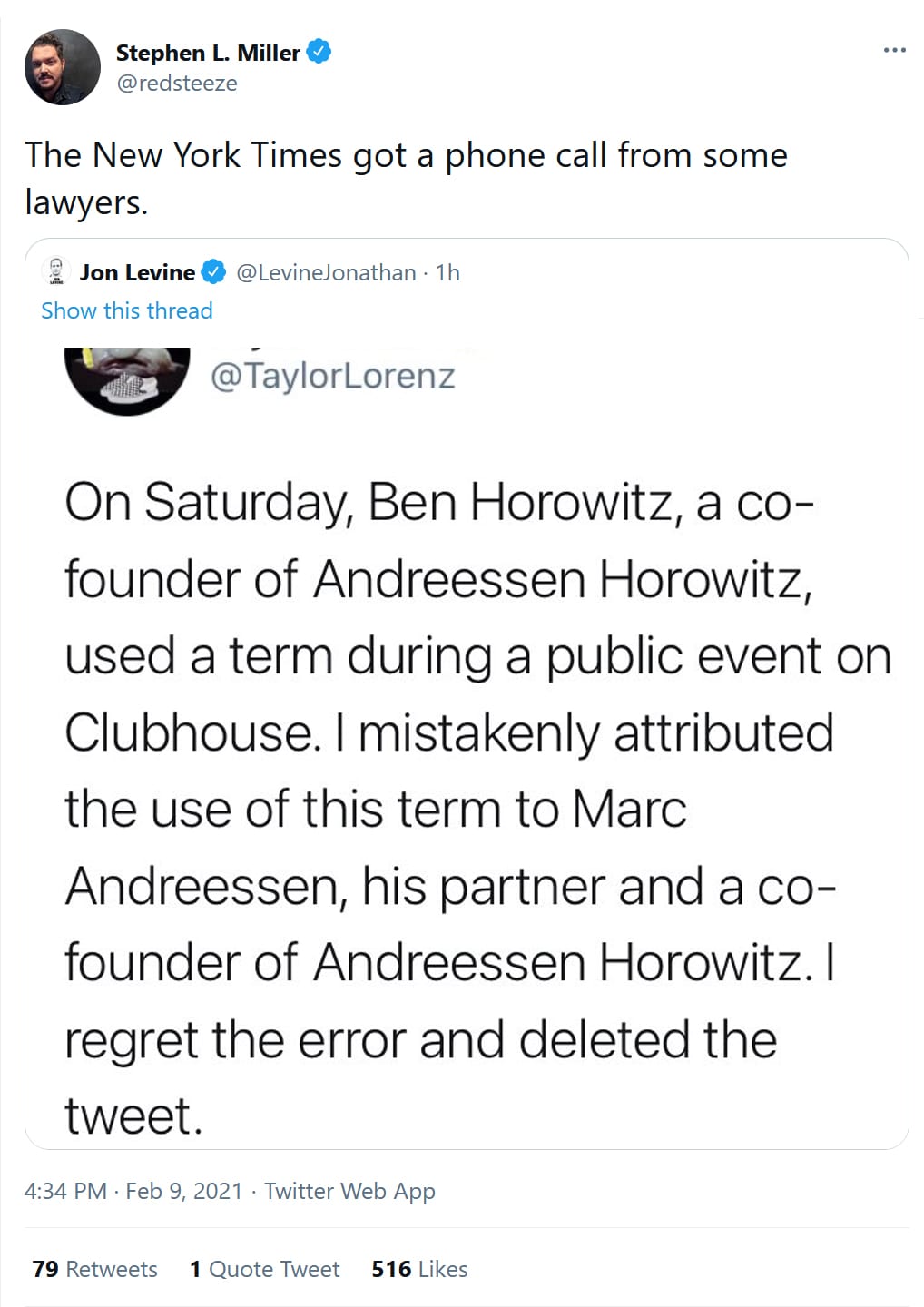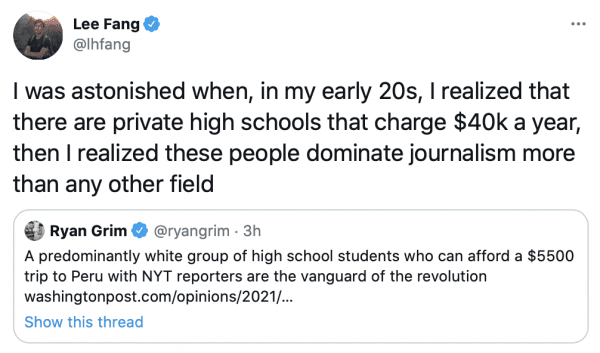AT THE NEW YORK TIMES, THE DON MCNEIL SCANDAL DEEPENS:
Now, today Erik Wemple, the Washington Post‘s media columnist, wrote a piece in which he contacted some of the students who were on that 2019 field trip to Peru with McNeil, and who complained about him. The trip, by the way, cost over $5,000 per student; your parents would have had to be pretty well-off to send you on it. Here is what Wemple found:
Six students who participated in the trip told the Erik Wemple Blog a consistent story about McNeil’s comportment: He provided expertise about public health and science consistent with what the students had expected. When the structured discussions yielded to informal chatter about other topics, it was a different story. McNeil was brusque and difficult, they said, in keeping with his prickly reputation in the newsroom.
As for specifics:
- Students largely confirmed in broad outlines McNeil’s account of the n-word fiasco. But they said that he uttered the epithet in a way that they perceived as casual, unnecessary or even gratuitous.
- In a discussion of cultural appropriation, McNeil scoffed. Though the term applies to people in Western countries adopting fashions or other items from other cultures, McNeil offered the example of people all over the world eating imported Italian tomatoes, according to a student in attendance. What’s the problem with that?
- Two students reported coming away with troubling impressions of McNeil’s view of white supremacy, with one of them claiming that he said it didn’t exist.
- Speaking about high incarceration rates of African Americans, McNeil argued that if they engage in criminal activity, that’s on them, and not on an oppressive and racist power structure, recalls a trip participant who said that the comments were “triggering” to the group. The participant, however, said that McNeil’s opinions didn’t disparage African Americans.
A caveat: There were about 20 students on the trip and many conversations. This is not a comprehensive inventory. But the tensions between McNeil and the students — a predominantly White group with progressive sensibilities — led some participants to withdraw from interacting with him as the trip wore on.
So these were rich liberal white kids. An older white man questioned their woke assumptions about “cultural appropriation,” and that hurt their feelings. The older white man supposedly said that high incarceration rates among black Americans might be a result of high black crime rates, and not racism. Hey maybe he’s wrong about that, but that’s a debatable proposition — though not to these rich white progressive snowflakes, who were “triggered.” I would very much doubt that a New York Times reporter would deny that white supremacy exists, but I would imagine such a figure saying that it is not as ubiquitous as these teenagers think it is.
There is a bit of pushback regarding another attempt by a Timesperson to feed a prominent figure to the Twitter mob:

That’s quite a non-apology apology from Lorenz. In 2014, Matthew Continetti of the Washington Free Beacon described the Times as:
Gossipy, catty, insular, cliquey, stressful, immature, cowardly, moody, underhanded, spiteful—the New York Times gives new meaning to the term “hostile workplace.” What has been said of the press—that it wields power without any sense of responsibility—is also a fair enough description of the young adult. And it is to high school, I think, that the New York Times is most aptly compared. The coverage of the Abramson firing reads at times like the plot of an episode of Saved By the Bell minus the sex: Someone always has a crazy idea, everyone’s feelings are always hurt, apologies and reconciliations are made and quickly sundered, confrontations are the subject of intense planning and preparation, and authority figures are youth-oriented, well-intentioned, bumbling, and inept.
And things have only gotten worse, as editor Dean Baquet has lost control over his newsroom.
UPDATE (FROM GLENN): The spoiled and woke white kids are talking about “racial justice.”

